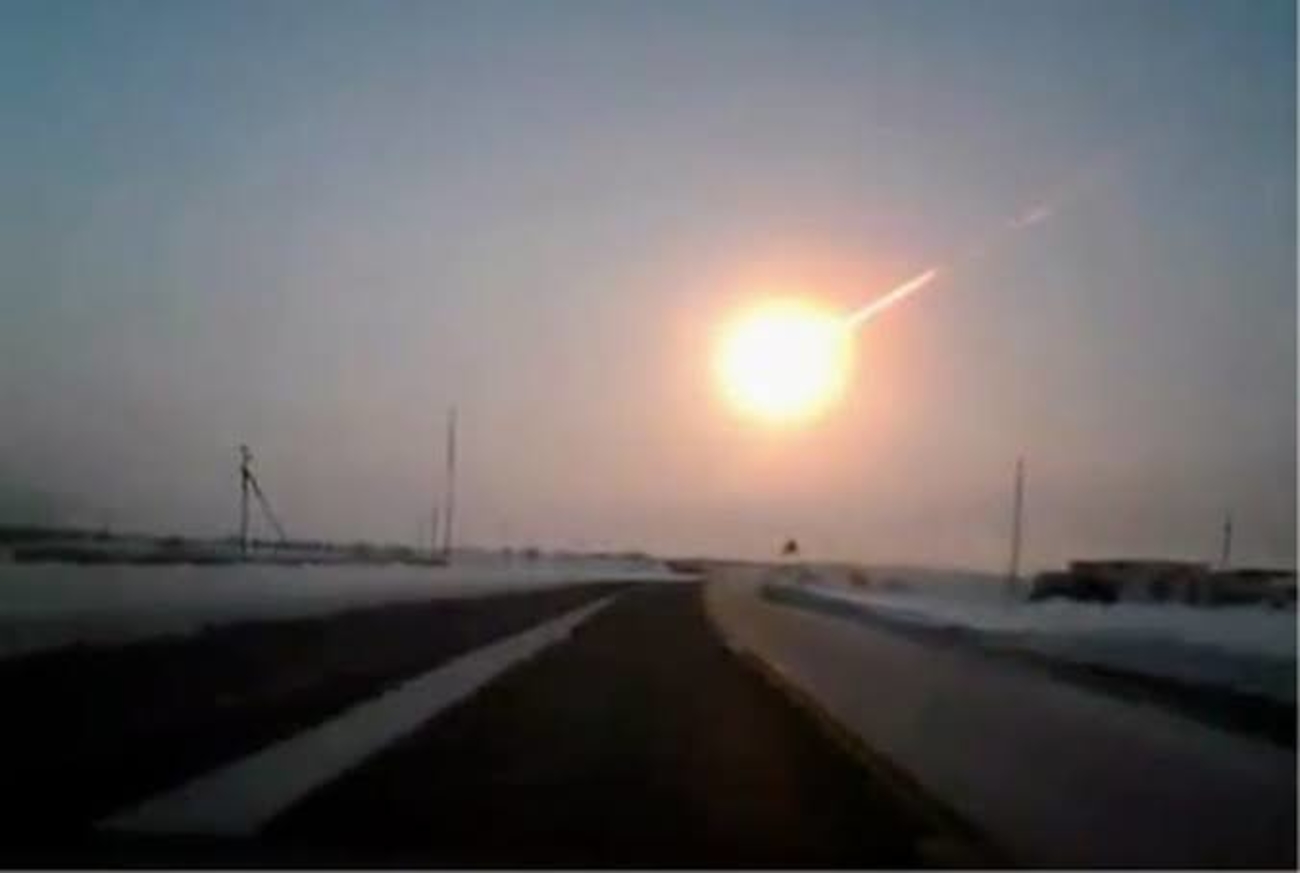Last asteroid to hit Earth with damage was in Russia in 2013 with thousands injured | METSUL FILE
–
An asteroid hit Earth at the end of the week, just two hours after it was discovered. Designated 2022 EB5, the small rocky object impacted the planet on March 11 north of Iceland, according to several astronomers. At just three meters wide, the 2022 EB5 was about half the size of an average male giraffe, which grows to around five to six meters tall. As such, it was unlikely to cause any harm.
About half an hour ago (21:30 UTC) a meteoroid entered the Earth’s atmosphere, scooting across the sky between Greenland and Norway.
Here’s how it looked to @eumetsat‘s #Meteosatwhich saw it just off the NW Coast of Norway…a bright flash in the night-time darkness. https://t.co/FCn17zxQtZ pic.twitter.com/nynMdKI71I
— Simon Proud (@simon_sat) March 11, 2022
The small 3-4 meter wide asteroid #2022EB5 impacted Earth (disintegrated high in the atmosphere) last night just two hours after it was discovered! @MarkBoslough has more info. https://t.co/gfsuO4QzTt
— Phil Plait (@BadAstronomer) March 12, 2022
EB5 2022 had burned harmlessly in the atmosphere, and it is unknown whether any residual fragments actually survived intact. People in Iceland reported hearing a bang and seeing a flash of light. The International Meteor Organization is looking for eyewitness reports from anyone who may have seen it enter the atmosphere. The asteroid itself was discovered just two hours before impact by Hungarian astronomer Krisztián Sárneczky.
Asteroids are potentially one of the most dangerous natural disasters the planet can experience, especially as there is currently no immediate way to stop them. According to research by the Davidson Institute of Science, the educational arm of Israel’s Weizmann Institute of Science, an asteroid over 140 meters in diameter would release an amount of energy at least a thousand times greater than that released by the first atomic bomb if impact Earth.
The explosion was detected by Nuclear Test Ban Treaty Organization infrasound stations in Greenland and Norway. Combining data from the two sites, University of Western Ontario astronomer Peter Brown estimates that “the asteroid exploded with an energy close to 2 kilotons of TNT. Assuming a speed of 15 km/s, it should be about 3 m in diameter,” he said.
2022 EB5 asteroid impact infrasound from Norway. Better SNR than I18DK; when combined with data from I18DK total energy estimate is now closer to 2 kT TNT. pic.twitter.com/m8VZGQmSTf
— Peter Brown (@pgbrown) March 12, 2022
Something even bigger – over 300 meters wide like the asteroid Apophis – could destroy an entire continent. An asteroid more than a kilometer wide – like 138971 (2001 CB21), which passed Earth in early March – could trigger a worldwide cataclysm.
In 2013, asteroid in Russia scared the world
The last asteroid impact before 2022 EB5 was in 2013, when a small asteroid about 17 to 20 meters wide impacted, exploding over Chelyabinsk, Russia. Although the impact itself was not serious, the shock wave caused thousands of windows to break with many injured needing medical attention due to broken glass.
HISTORY | Five years ago, an 18-meter asteroid hit Earth. It exploded 23 km above the Russian city of Chelyabinsk. The shock wave blew out windows and 1500 people were injured. pic.twitter.com/iU3lhLKh3G
— MetSul.com (@metsul) February 16, 2018
It is for this reason that scientists around the world have worked to study the many asteroids in space and catalog them, calculating their trajectories and anticipating possible impact events. And there are many of them. Asteroids are one of the most numerous types of objects in the solar system.
There are currently more than 1,113,000 asteroids known to exist in the solar system, according to NASA, but these are just the ones definitively identified, with experts always finding more. Fortunately, they can usually be identified due to the many powerful telescopes available to astronomers. However, not all are.
In 2019, a 100-meter asteroid designated 2019 OK passed Earth at a distance of just 70,000 kilometers. According to a study published in the academic journal Icarus in early 2022. Essentially, they appear to move much slower than they actually are. When approaching Earth from a specific part of the eastern sky, these asteroids can appear stationary around orbit.
In September 2021, asteroid 2021 SG passed Earth at an extremely close distance. However, scientists never saw it happen – in fact, they only saw it after it had already passed. This happened again in October, when 2021 UA1, which was just two meters wide, was spotted after passing Earth at a distance of just 3,000 kilometers.
The asteroid that exploded over Chelyabinsk also went unnoticed. The reason for this is that, unlike other asteroids that approach Earth towards the Sun, these came from the direction of the Sun. The glare of sunlight makes it difficult to locate these asteroids.
Why wasn’t the 2022 EB5 noticed until just two hours earlier?
It was not for any of the reasons mentioned. Instead, according to Weizmann Institute of Science astronomer Dr. David Polishook – who is also part of NASA’s DART (Double Asteroid Redirection Test) mission, the first major attempt to test a method to prevent an asteroid impact, was not noticed simply for its size. “It was a small stone. It only reflects a little sunlight and is difficult to identify,” explained Polishook.
He added that this is only the fifth time an asteroid has been seen before impacting Earth. “The impact caused no damage, falling into the sea between Norway and Iceland. However, imagine it would have fallen a few hours earlier over Russia,” said Polishook. “With the ongoing crisis, would Russia have identified it as an asteroid or a rocket, and retaliated with its own missiles, he asked.
–


